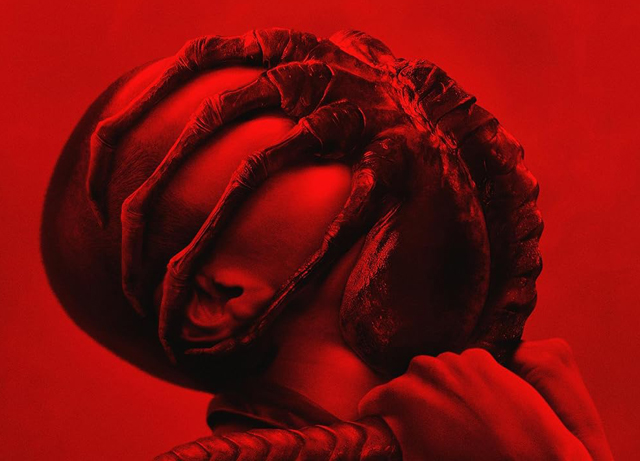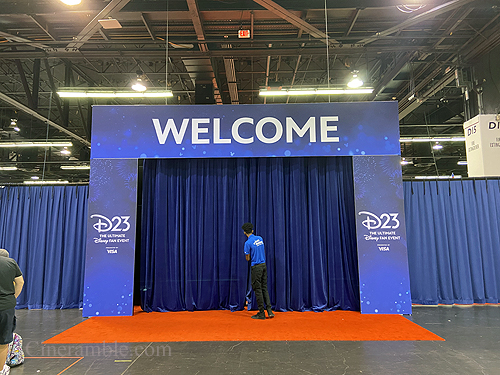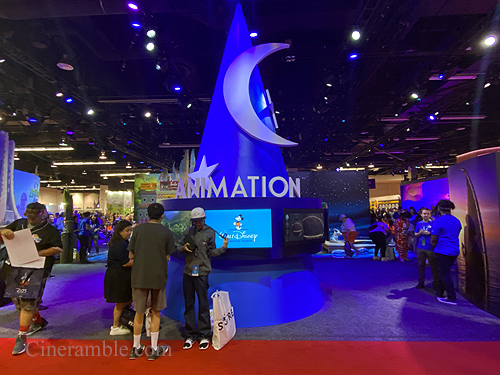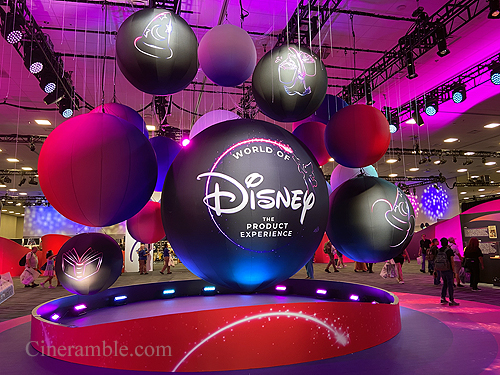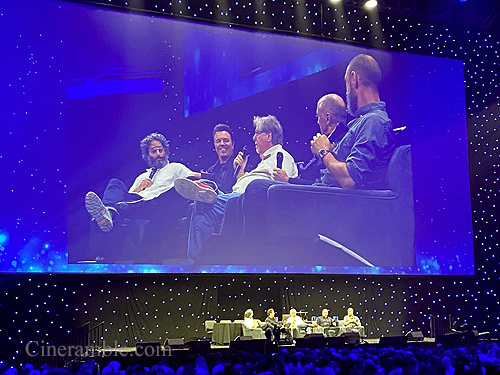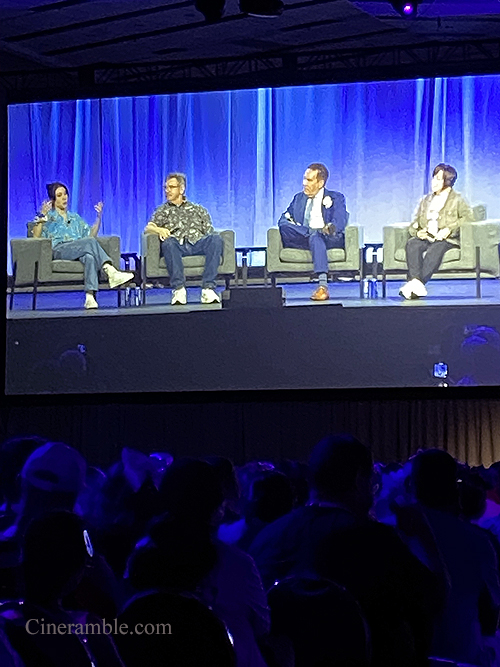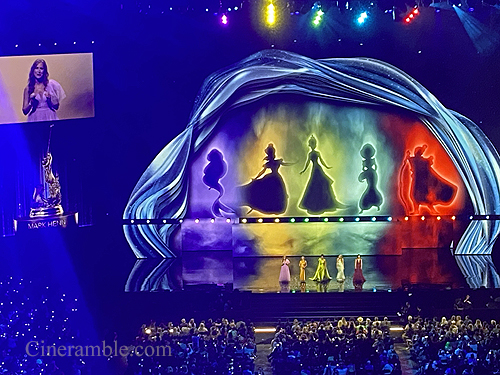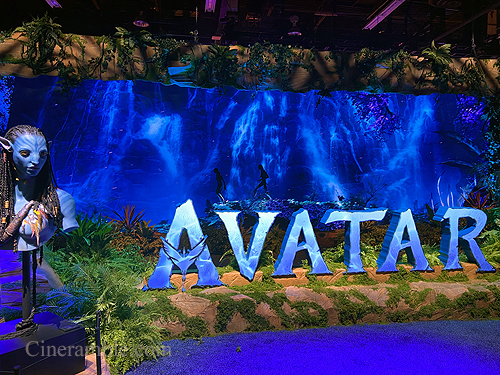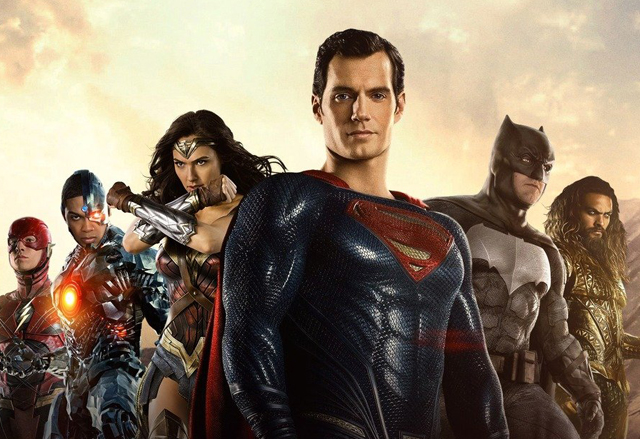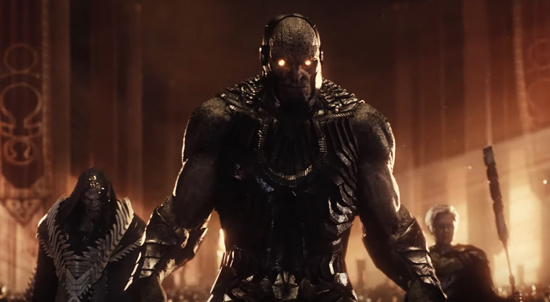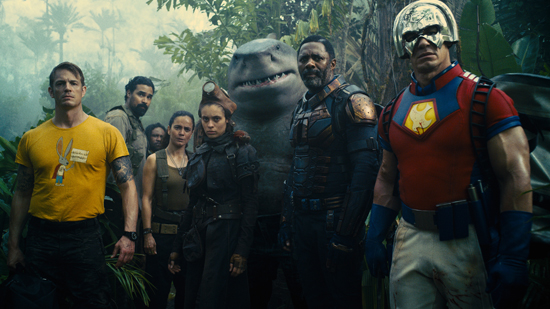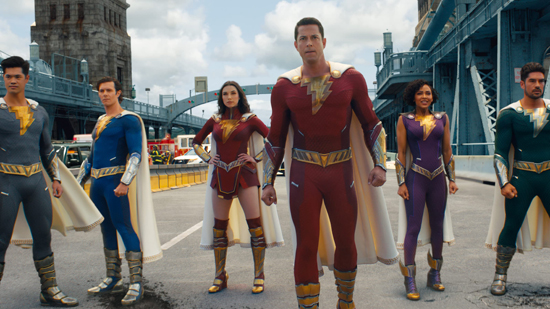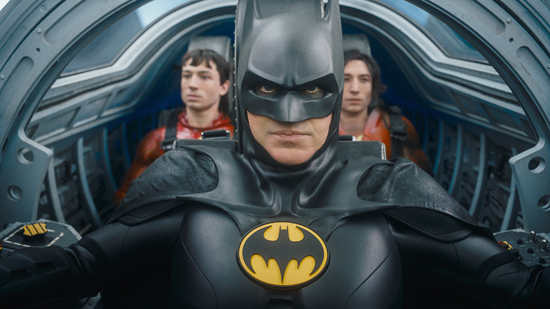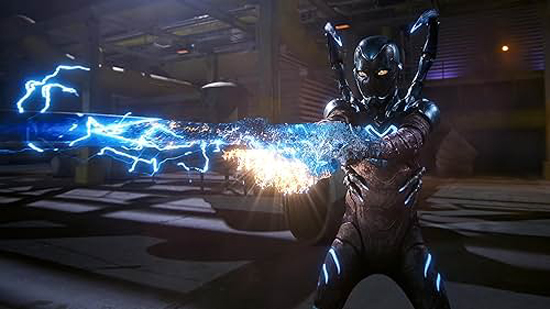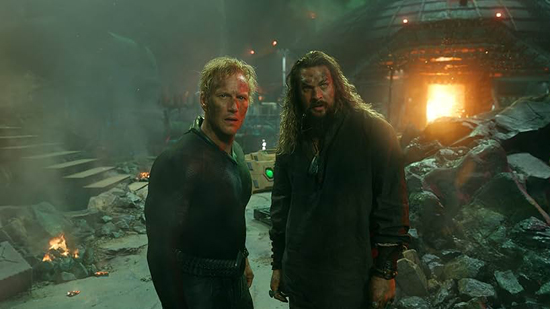
The Summer of 2024 proved to be an unexpected couple of months at the box office. The month of May, which typically kicks of the Summer with a bang ended up being more of a whimper. With no Marvel film in it’s first week, Hollywood had to rely on the Ryan Gosling/ Emily Blunt vehicle The Fall Guy (2024) to open up the season; a feat that it sadly didn’t have the muscle to pull off. But what really got Hollywood sweating was the surprisingly weak Memorial Day weekend box office. The highly anticipated prequel film, Furiosa: A Mad Max Saga (2024) not only under-performed on the usually big ticket weekend, but it ended up becoming a massive flop, even despite glowing reviews from both critics and audiences. This began to spread talk around the industry that the theatrical market was in trouble and that Hollywood was in for a massive downturn in box office in what looked to be a very weak summer. But, perhaps all of us were too quick to give up on the box office for Summer 2024, because once we entered June, things actually took a turn for the positive. There was surprisingly strong box office results for the sequels Kingdom of the Planet of Apes (2024) and Bad Boys: Ride or Die (2024) that helps to buoy the box office for a few weeks more. And then came the box office savior that Hollywood needed. Inside Out 2 (2024) not only exceeded expectations, it has broken down every conceivable record there is for an animated movie at the box office. This is an inspiring story on it’s own, as Pixar needed a win after seeing it’s brand take a hit post-pandemic after the misguided decision to send their films straight to streaming for two years. This summer proved that the Pixar brand is still strong and they weren’t the only battered brand to see a comeback. Marvel had it’s biggest hit in years with the record-setting release of Deadpool & Wolverine (2024), giving parent company Disney the two undisputed champions at the Summer box office by a mile with it and Inside Out 2. That’s a relief to the Mouse House after the tough year they had in 2023. There were also several surprisingly strong box office returns for movies like Twisters (2024), It Ends With Us (2024), A Quiet Place: Day One (2024) and Longlegs (2024), and what looked initially like a bleak Summer season in the end became a bright moment for movies in general.
So, with a Summer season that proved to be better than expected now behind us, it’s time to take a look at what’s ahead for us in the Fall. Like in past years, I will be looking at select movies that I think are the ones that are Must Sees, the ones that have me worried, and the ones that I think you should skip. Keep in mind my track record is not perfect, so some movies may end up being better than I expected or be less than I expected. My choices here are based on my own expectations from what I have gathered from the hype surrounding these movies as well as the effectiveness of the marketing. So with all that said, let’s take a look at the Movies of Fall 2024.
MUST SEES:
MEGALOPOLIS (SEPTEMBER 27)
This movie has me intrigued more than any other coming out in the months ahead. It goes without saying that Francis Ford Coppola is one of the greatest film directors of all time. I’m sure that any list made of the greatest movies of all time will have at least 3 Coppola movies on it. But, in recent years, Francis has stepped away from Hollywood, choosing instead to make small art films like Tetro (2009) and Twixt (2011). While it is sad that one of the greats of Hollywood has been left behind by the industry due to his purity of vision, he has nevertheless revered by the industry, so whenever he makes something new people still take notice. This year, we are finally getting able to see what is undoubtedly his most ambitious film in years. Megalopolis has been a passion project of his that he’s been persistently bouncing around for 20 years. When you look at the very out there premise, you can see why Coppola struggled to get the financing for the film. In the end, he put his own money into the project, making this one of the biggest self-financed films in history. The fact that this movie exists at all in a final form is a miracle in itself. But, is it a miracle that may have consequences for it’s creator. The movie premiered at the Cannes Film Festival to a mostly mixed reception. Some critics loved it while others found it to be a baffling mess. Given it’s nature, I can easily see this movie dividing audiences once it makes it’s way to theaters; which even there became a struggle as it took a while to find a distributor until Lionsgate thankfully stepped in. I really do hope it turns out to be better than expected because this is a movie that I’ve been hearing about for such a long time and I’m thrilled to see it become a reality. It’s been a while since we’ve seen Coppola work on this kind of scale and I think it’ll be worth it to see the “great master” take one final big swing. The visuals look great, and the all star cast that includes Adam Driver, Giancarlo Esposito, Aubrey Plaza, Shia LaBeouf and Dustin Hoffman looks really impressive. I hope this movie delivers on it’s promise. The man who gave us The Godfather Parts I and II, as well as Apocalypse Now (1979) and Bram Stoker’s Dracula (1992) is one of the last swing for the fences filmmakers left of his generation, and even if it may be a mess, it’s a mess that I must see to fully appreciate.
JOKER: FOLIE A DEUX (OCTOBER 4)
Five years ago, Warner Brothers and DC put out a somewhat controversial comic book film that centered around the famed “clown prince of crime.” Some saw it as a brilliant deconstruction of one of comic books and cinemas greatest villains that also tapped into some intriguing social commentary. Others thought it was exploitative and convoluted in it’s approach towards creating a fully fleshed out characterization of it’s central character, as well as being derivative of too many other movies like those of director Martin Scorsese. But the one thing that nobody could dispute was the powerful performance given by Joaquin Phoenix as the titular psychopath, earning him a well deserved Oscar for Best Actor that year. In the years since, the movie has continued to be controversial, with a lot of people worried that it has been co-opted by reactionary thugs on the internet who clearly misread the intention of the movie and believe that the movie supports their own twisted and bigoted agendas. Which is why I’m pleased to see the direction that returning director Todd Phillips and company have decided to go with for this sequel by making it a musical. Nothing would upset the edge lords who embraced the first movie more than to see this franchise turn into a song and dance extravaganza. I can already see the click bate reactions by this crowd complaining that “Joker’s Gone Woke” and I’m so eager to see that crowd meltdown over this movie. I respected the first movie well enough without outright loving it. I do think turning this kind of story into a musical is an interesting angle and I’m intrigued to see how it’s executed. It would be interesting to see if the musical numbers feel like the musicals of the same era that the original Joker was trying to evoke, like say emulating the movie of Bob Fosse or other kinds of grounded, gritty musicals. Or are we going to see some old school Hollywood musical sequences like Singin’ In the Rain (1952) had. Having Joaquin Phoenix back is a plus, and I’m interested to see how handles the musical aspect. We know Lady Gaga can carry her own, and I’m interested to see what she does with the character of Harley Quinn. This movie is taking a risk to be sure, with the possibility of alienating part of it’s fan-base, but that’s the kind of gamble I like to see from Hollywood.
MOANA 2 (NOVEMBER 27)
It’s been a tough couple of years for Disney Animation. Their last truly blockbuster hit was pre-pandemic with Frozen II (2019). Since then they’ve been putting out completely original films, and none of them have been lighting up the box office. Sure, the pandemic had something to do with the reversal of fortune, and the move to streaming has altered audience patterns, especially with Encanto (2021), which became a smash hit once it started to stream on Disney+. But, the back to back flops of Strange World (2022) and Wish (2023) have put a damper on the animation powerhouse, with the latter being especially disappointing as it was supposed to be the studio’s big 100th anniversary project. Disney Animation really needs something to turn it’s fortunes around, and that means relying on that dirty word again; sequels. It’s understandable to think that Disney is selling out by falling back on sequels rather than adding something new to the mix, but new things are what we’ve been getting for the last couple years, and it’s not working. To help rebuild themselves back to where they were, they need to go with what’s worked before, and they have a reliable winner with Moana (2016). The original film was a smash hit, and has only gained in esteem in the years since. It is the most streamed movie not just on Disney+, but across all platforms, which is quite a feat so it makes sense that Disney would want to make a sequel given the original’s staying power. The film thankfully returns the original cast, including Auli’i Cravalho as Moana and Dwayne Johnson as Maui. While the sequel looks like it will be covering some of the same territory as the first, it does appear that it will offer some new thrills to the mix, including the hint of a yet to be revealed villain. One thing that sadly will not be present in this movie are new songs from Lin-Manuel Miranda. Hopefully the new songwriters are capable of living up to the high standards set by the first movie, which included now beloved classics like “How Far I’ll Go” and “You’re Welcome.” The one thing you can count on is that the Disney animators will still make this movie a visual feast, and I certainly am eager to hit the high seas again with Moana and Maui.
NOSFERATU (DECEMBER 25)
Merry Christmas from the Dark Side. This isn’t the first time someone has attempted to update F.W. Murnau’s chilling and now century old horror masterpiece for the modern day. Werner Herzog famously remade Nosferatu in 1979 with Klaus Kinski as the titular vampire. But, if there was ever a right person to make another attempt at re-creating the spooky horror of this classic story, it’s the man behind terrifying films like The Witch (2015) and The Lighthouse (2019). Robert Eggers is a director that has done a magnificent job of putting style back into horror, and what better way to show off what he can do than to pay homage to the movie that set the standard for the genre. The film does look like it will be a visual feast, but I also appreciate just how much Robert is trying to create the most unsettling visuals that he can with this version of the story. The shadow of a hand stretching over the city is an especially evocative visual, and one that is clearly a nod to the original, which was very much reliant on the use of shadows for conveying the supernatural. The trailer wisely keeps things vague, because I’m sure the studio would like to keep a few of the scares secret, but those familiar with the original film will definitely pick up on the story itself. Thankfully one of the withheld secrets is what the lead vampire, Count Orlock will look like. We know he is being played by Bill Skarsgard, who’s no stranger to playing iconic movie monsters. But I’m wondering if his look will be akin to the original creation by actor Max Schreck in the original, or are we getting a different Nosferatu. Ironically, frequent Robert Eggers collaborator Willem Dafoe is also in this movie, taking on the Van Helsing type role, who 24 years ago was nominated for an Oscar for playing Max Schreck in the film Shadow of the Vampire (2000). It will certainly be quite an experience, especially with this coming out on Christmas Day in one of the wildest out of season movie premieres in a while.
BEETLEJUICE BEETLEJUICE (SEPTEMBER 6)
It looks like the Fall season may be kicked off with a bang with the “ghost with the most” running the show. Legacy sequels that come out way beyond the release of the original can be a huge risk, but it helps when the same people who made the original are on board. There has been talk of a Beetlejuice (1988) sequel for over 30 years, and now it has finally become a reality. The question is, can it still spook up the same mix of laughs and scares. It’s been five years since Tim Burton last released a film in theaters, the ill-fated remake of Dumbo (2019), but in the meantime he managed to find his mojo once again with the hit Netflix series Wednesday, of which he produced and directed half of the episodes. The positive sign is that he is bringing on board the creative team from the Wednesday series to help him craft this sequel, including the shows writers as well as the star Jenna Ortega. What is also pleasing is that Tim Burton is making an effort with this film to primarily use practical effects instead of computer animation, so that the movie will feel authentic and in the same spirit of the original. This includes long neglected effects like stop motion and complex prosthetic make-up, which were key components of creating the world of the original Beetlejuice. But of course, you can’t do a Beetlejuice sequel without the man who brought him to afterlife in the first place, Michael Keaton. Keaton is certainly a much older man now, but Beetlejuice is the kind of character where that doesn’t matter and it looks like he is slipping right back into that iconic striped suit like he never took it off. And if he can play Batman again, why not also play Beetlejuice while he still can. Another plus is that Winona Ryder and Catherine O’Hara are also returning to reprise their roles as Lydia and Delia Deetz. And the new cast including Justin Theroux and (hello again) Willem Dafoe all look like they will be a lot of fun in their roles. Let’s hope that the long wait is worth it and that Tim Burton is able to deliver yet another thrilling and funny adventure with the recently departed.
MOVIES THAT HAVE ME WORRIED:
GLADIATOR II (NOVEMBER 22)
It is remarkable that in his mid-80’s Ridley Scott is still capable of making epic scale films for the big screen. At the same time, he has also been a bit hit or miss in recent years. For every The Martian (2015) or The Last Duel (2021) that lands, there is an Exodus: Gods and Kings (2014) or Napoleon (2023) that doesn’t. He also has a very shaky track record when it comes to creating franchise follow ups, as the movies Prometheus (2012) and Alien: Covenant (2017) failed to reignite the Aliens franchise. So, there’s a bit of doubt surrounding whether he is able to create a follow-up to his Oscar-winning epic Gladiator (2000). There are a lot of variables that are working against this movie, chief among them is that there is no Maximus in this sequel. The iconic central character of the original ends up dead at the end, so where do you go from there. Of course, it would be a tall order to have Russell Crowe reprise the role in a different way, as he is much older and out of shape now. So, what this movie does instead is to take the child character from the first movie, the son of the Emperess Lucilla (played by Connie Nielsen) and have him aged up and in the role of a gladiator inspired by the memory of Maximus. I will say that the casting choices in this movie are intriguing. I’m especially interested in seeing how Denzel Washington performs in this swords and sandals style epic. He may feel too modern and out of place, but then again I just saw him kill it as Macbeth only a couple years ago so he might surprise people. I also am interested in seeing Pedro Pascal perform in this movie, playing a general in service to two corrupt emperors that have taken over after the death of Commodus (Joaquin Phoenix). What remains to be seen is if Paul Mescal can fill the big boots left by Russell Crowe, who won an Oscar for his performance. Maximus is one of the most iconic movie heroes of the last quarter century. Also, it’s hard to say if a movie like Gladiator needs a second chapter, as the first one felt so complete. Hopefully Ridley Scott still has it in him to deliver yet another grand epic on that same level again.
MUFASA: THE LION KING (DECEMBER 20)
If you’ve been reading my blog for at least the last five years, you’ll recall that I absolutely hated The Lion King (2019), Disney’s so-called “live action” remake of their animated masterpiece. What frustrated me was that the movie was just a copy and paste job that added nothing to the experience, and in fact robbed the story of it’s strength by having the characters be animated in this naturalistic style that robbed them of any personality. So, you’re probably wondering why I have this movie here and not in the movies to skip category. Well, I still have plenty of reservations about this movie, primarily with how it still uses that unappealing photo realistic character animation for the animals. But, at least with this film they are working with an original story, rather than copying beat for beat the same plot of the original film. Sure, it’s a prequel, telling the back story of Mufasa and Sacr so we aren’t really going to cover any unknown territory. But at least now I don’t have to negatively contrast the beats of this film with those of a vastly superior movie. One other intriguing aspect of this film is that it is being directed by Oscar-winner Barry Jenkins (Moonlight, If Beale Street Could Talk). Getting a prestige, art house filmmaker like him to jump on board is a bold move on Disney’s part, and it might make this a bit more of a deeper film that it normally would be. At least that’s the hope. I am worried that this could be the kind of movie that could sully Barry Jenkins’ reputation as well if it still feels like a cash grab the same way that the first one did. My hope is that Jenkins is capable of finding a rich and meaningful story with this film that transcends the limitations of the medium and well exceeds expectations. The track record of Disney remakes is pretty shoddy, and the sequels to those remakes fare even worse. Here’s hoping the gamble of giving this project over to a filmmaker of Barry Jenkins’ caliber helps to make this Lion King prequel roar.
WICKED (NOVEMBER 22)
One has to wonder if the Broadway to cinema pipeline has run dry. There have too many stage musical translations recently that have failed to light up the box office. One of the last true blockbuster musicals that has yet to get the cinematic treatment is finally making it’s way to theaters, and it is a lot to digest. One thing that worries me is that the film looks a bit overproduced. It seems like a whole lot of the budget went into the make-up, costuming, and the production design. But, here’s the problem; it doesn’t give off any authenticity. Overproduced movies never feel like they are lived in worlds; the artificiality just overwhelms everything else. You do admire the hard work that the technicians put into building all of the sets and costumes, but unless people connect with the story, no one will care. And that’s the vibe I am getting with this cinematic adaptation of Wicked. The trailer seems to be going out of it’s way to hide the fact that this is a musical, which should be the biggest selling point for this movie. We all know about Wicked from Broadway, so why aren’t they showing us a clip from a musical number. Perhaps it’s a sign that the studio is concerned with the final product of the musical numbers. Hopefully this isn’t the case. One of the pluses of this film is the stellar cast that’s been put together. I’m not quite sure about Ariana Grande as Glinda, but Cynthia Erivo is one of the most powerful belters working in musicals today, so her casting as Elphaba should be something in the movie’s favor. The casting of Jeff Goldblum as the Wizard is another inspired choice, and I’m happy to see Oscar-winner Michelle Yeoh here as well. With all that, it’s still unclear if this movie is going to be able to stick the landing. The Broadway musical is beloved by many, as is the classic 1939 film that made The Wizard of Oz famous in the first place. That classic film still feels magical, and most of all tangible in how it depicted it’s magical world. You would think that over 80 years later we would be able to still make the land of Oz feel like a magical place.
VENOM: THE LAST DANCE (OCTOBER 25)
The iron grip that Sony holds on their rights to the Spider-Man side of the Marvel Universe has not been delivering anything good recently, outside of animation that is. Morbius (2022) was a disappointing mess and Madame Web (2024) may be an all timer for one of the worst comic book films ever. The only success that the Sony Spider-Verse has had in live action is with their collection of Venom films. Though those movies have been a success at the box office, they still are far from the level of quality that we’ve seen from the MCU. They still have the same convoluted plots and underwhelming action of all the other failed films in the Sony franchise. The only saving grace has been actor Tom Hardy in the leading role as Venom and his alter ego Eddie Brock. Hardy may be acting in trashy movies, but he’s still giving it his all and he’s managed to make the characterizations of these characters work. This new film, Venom: The Last Dance, appears to be where Sony is looking to close out the Venom franchise. Tom Hardy looks like he’s still having fun in the role, which is a good sign. But, there are some red flags that show up in the trailer. One of the big issues is the moment where it looks like they are retconing the stinger from the movie Spider-Man: No Way Home (2021), where Hardy’s Eddie has been transported briefly into the MCU, where he accidentally deposits part of his symbiote suit, which we thought may be a tease for other problems in that universe later. But as seen in the trailer, it looks like they are saying that that universe was not the MCU at all but instead is the same universe that they Venom movies have always existed in, thereby shutting down any possible multiverse connections in future. It gives us the sense that Sony is continuing to go rogue in defiance of the plan that Marvel Studios has been laying out, and I think it’s doing a disservice to their own franchise and the character of Venom. The hope is that Tom Hardy can still at least keep this movie entertaining, but it’s a shame that Sony has undercut their own cinematic possibilities by refusing to play nice with the rest of the Marvel Universe.
MOVIES TO SKIP:
KRAVEN THE HUNTER (DECEMBER 13)
Speaking of Sony’s endless string of mediocre Marvel films, here we have a new film dedicated to one of Spider-Man’s most famous foes. This movie was already delayed one whole year, mostly due to the ongoing labor strikes that drove down box office in general, but the massive delay also indicates that Sony didn’t have a lot of confidence in this one carrying the torch immediately after the strike had ended. The pattern from the Sony Marvel films has been one of completely missing the point why people want to see comic book movies in the first place. We aren’t concerned about the origins of these characters and why they became who they are. We just want to see them either be the heroes or villains they were meant to be. One thing is noteworthy about all of these Spider-Verse films that we’ve seen from Sony; a distinct absence of Spider-Man himself. That’s because the Spider-Man that everyone loves is in the MCU, putting him out of reach unless Sony plays ball with Marvel. They are never going to be able to spin-off a cinematic universe on the same level with just the side characters of the Spider-Man comics. We don’t care about Kraven the Hunter as the main character. We want to see him fight one on one with Spider-Man, and this movie will definitely not deliver on that. The casting of Aaron Taylor-Johnson is a bit strange for this character, as he seems to be a fair bit too young for what should be a seasoned hunter. Maybe there will be some decent action scenes, but the trailer just gives us the same generic style that we’ve seen from all the other Sony Spider movies, where they feel like they are ashamed to be adapted from a comic. The MCU showed that audiences are embracing of the campy and colorful aspects of comic books. The Sony films feel like throwbacks to the era of super hero movies that were trying too hard to feel grown up as they grounded their characters too much in reality. For Kraven, he should be a formidable villain and not just another generic anti-hero.
FLIGHT RISK (OCTOBER 18)
It’s a painful to watch one career downward spiral manifest on film. This new thriller is giving us two. Mark Wahlberg’s recent choices in film roles have seen him fall more and more off from his career highs. He seems to be distancing himself more from Hollywood as he’s become more spiritual in the last couple of years. Now, it is possible to be more in touch with one’s faith while at the same time continually challenging themselves as an artist, but Wahlberg seems to be distancing himself a bit too much and that is putting a limit on the kinds of roles that he’s taking. It’s a similar downward trend that this film’s director, Mel Gibson, has gone through and both of them show no signs of changing anytime soon. Both Wahlberg and Gibson could do so much better, and have so in the past, but their egos have gotten in the way and have led them to attaching their names to schlock like this. In Gibson’s case, he’s never really gotten out of the rut he put himself in through his own bad behavior, and Wahlberg seems too concerned about his own image that he’s stopped taking risks. I guess this movie exists because they like working together (this is their third collaboration) and it’s not a bad thing to work with the people you trust the most. But, both of these guys should take a more introspective look at where their careers are, because this kind of movie should be beneath them, and yet here they are. But if Wahlberg feels comfortable acting with one of the worst bald caps I’ve seen in recent memory, then it seems to me that he’s not ready to be the risk taker he once was again, and the same goes with Mel who said yes to having Mark wear that bald cap.
RED ONE (NOVEMBER15)
Another painful reminder that star power does not guarantee that a movie will be good. This Christmas themed action movie feels like it’s late to the party by a couple of years. Nothing is going to surpass the hilariously over-the-top Violent Night (2022), which was one of the best possible examples of bringing Christmas theming to recognizable action movie tropes. Given that this is a production from Dwayne Johnson’s own company, Seven Bucks, it’s clear that it’s little more than a star vehicle for him. It might have been funnier if he were in the Santa role, but no he gave to J.K. Simmons, which even isn’t the first time that the Oscar-winner has played St. Nick. What makes this trailer especially cringe is the very obvious indication that neither Dwayne nor his co-star Chris Evans have any on screen chemistry. Evans looks like he was dropped in from an entirely different movie, and his personality is merely looking at all the Christmas themed elements around him and finding it all weird. That’s pretty much it; no other punchline. Overall, it just looks like an excuse for an easy paycheck for everyone involved, so I highly doubt this will turn into a new Holiday classic. There are far better action movies with Christmas theming to them (the aforementioned Violent Night is highly recommended). I would imagine this movie will be out of theaters not long after we cut our Thanksgiving turkeys, falling well short of the Christmas season that it is hoping to capitalize on.
So, there you have my outlook of the upcoming Fall Season at the movies. Of course, there are many other films that have yet to make it through the Fall film festival circuit that could become some big deals in the months ahead as the Awards Season heats up. While the Fall hasn’t exactly been producing big Oscar winners recently (the last two Best Picture winners came out in the Spring and Summer of their respective years), it still is a fertile ground for some movies that no doubt will be talked about for next year’s awards. I’m certainly interested to see what surprises come up in the next few months. My favorite movie of 2023, The Holdovers, wasn’t even one of the films on my radar when I did my preview of Fall from last year. Of the films that I spotlighted in this preview, I would imagine that few are going to be deemed awards worthy, and my excitement is more about anticipating the chance to see them for the first time. Francis Ford Coppola’s Megalopolis will be one of those experiences that I have to see for myself in a theater, even if there’s the chance that I might not like it. The fact that the movie even got made is kind of miraculous and that in itself is the allure. I’m also eager to see how audiences respond to Joker: Folie a Deux, which could be it’s own spectacle. And my hope is that movies like Gladiator II and Wicked are better than expected. Given that both movies are releasing on the same day, we could see another Barbenheimer situation arise due to the strange counter-programming, though I doubt either will achieve the same box office levels, given that Moana 2 is likely going to crush both over the same holiday weekend. There’s a lot of interesting stories waiting to happen this fall, and I will be heading out to the movies quite a bit in the next couple of months. Hopefully this Fall continues the same box office recovery that we saw happen this Summer. We may not have the same kind of blockbusters, but a good healthy box office spread across all films will be great for theaters in general. Here’s hoping for a good finale to the year 2024 at the movies, and an even better future going into 2025.

